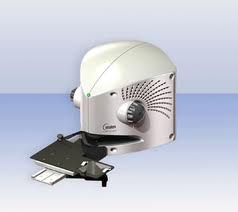Difference between revisions of "Ultraviolet Analyzers"
(Created page with "Category:Analyzing{{Knoppen}} <noinclude><!------------------------------------------------ * READ THIS FIRST * Only edit this page if you can improve the content. * Imprope...") |
|||
| Line 1: | Line 1: | ||
[[Category:Analyzing]]{{Knoppen}} | [[Category:Analyzing]]{{Knoppen}} | ||
[[File:Ultraviolet Analyzers.jpg|thumb|right|Ultraviolet Analyzers]] | |||
'''Ultraviolet Analyzer''' is a radiant energy analyzer that uses ultraviolet region of the electromagnetic radiation spectrum. This region consists of wavelengths from 100 to 400 microns. Chemical analysis is frequently achieved by absoption spectrophotometry in which radiation of different wavelengths is passed through a material, and the radiation transmitted, absobed, is measured to determine material identity and concentration. This technique is used in the ultraviolet, infrared, X-ray and similar regions, it usually surveys all the wavelengths in the UV or IR region, or at least in the region of interest, and plots the absorption vs wavelength. | |||
An UV analyzer can be expected to be less specific than an IR analyzer. And, UV analyzers are generally capable of more sensitivity than their IR counterparts - trace analyses are common for UV. | |||
Samples may be gas or liquid, but the sample must be relatively free of dirt and must be in a single phase. Trace measurements are possible. As for liquid samples, vapor bubbles cannot be tolerated because they generate noise in the optical reading. If a pressurized cell is used on a gas sample, the cell pressure must be maintained constant. | |||
Latest revision as of 08:56, 29 January 2013
Ultraviolet Analyzer is a radiant energy analyzer that uses ultraviolet region of the electromagnetic radiation spectrum. This region consists of wavelengths from 100 to 400 microns. Chemical analysis is frequently achieved by absoption spectrophotometry in which radiation of different wavelengths is passed through a material, and the radiation transmitted, absobed, is measured to determine material identity and concentration. This technique is used in the ultraviolet, infrared, X-ray and similar regions, it usually surveys all the wavelengths in the UV or IR region, or at least in the region of interest, and plots the absorption vs wavelength.
An UV analyzer can be expected to be less specific than an IR analyzer. And, UV analyzers are generally capable of more sensitivity than their IR counterparts - trace analyses are common for UV. Samples may be gas or liquid, but the sample must be relatively free of dirt and must be in a single phase. Trace measurements are possible. As for liquid samples, vapor bubbles cannot be tolerated because they generate noise in the optical reading. If a pressurized cell is used on a gas sample, the cell pressure must be maintained constant.
